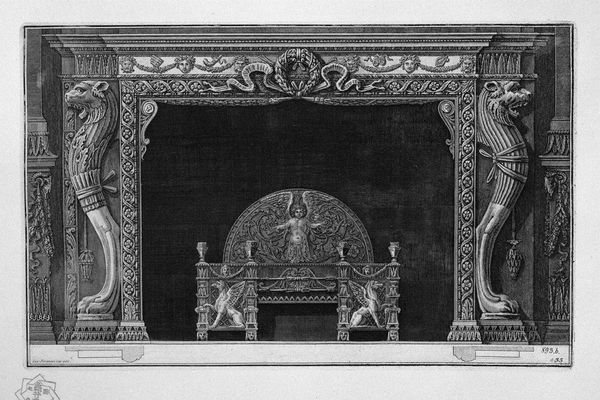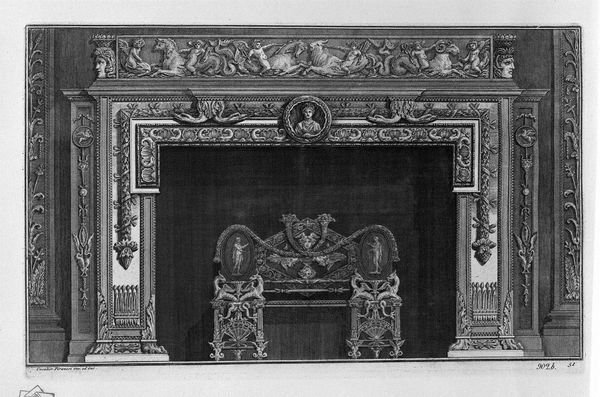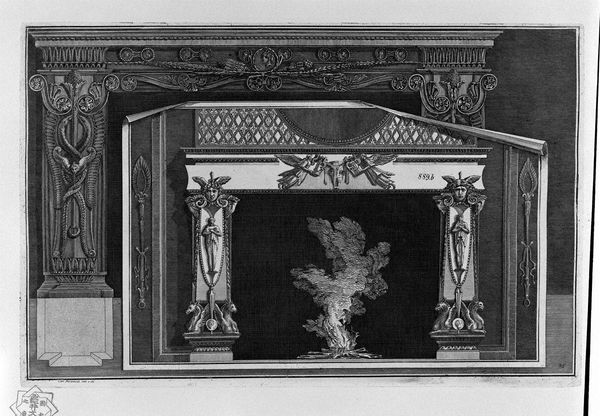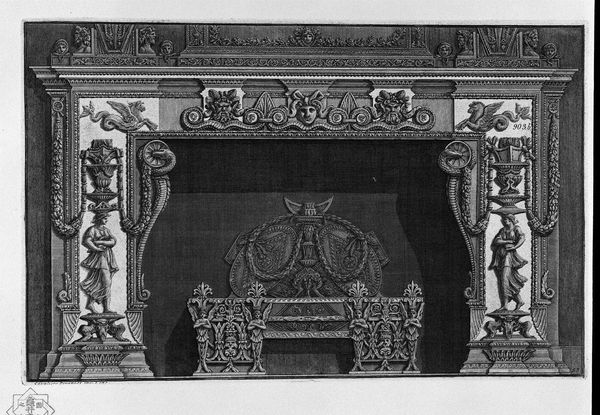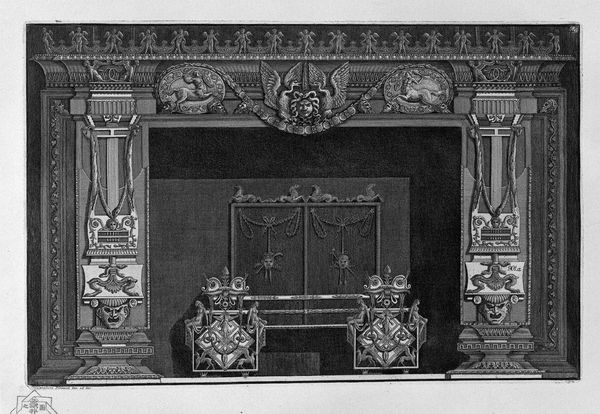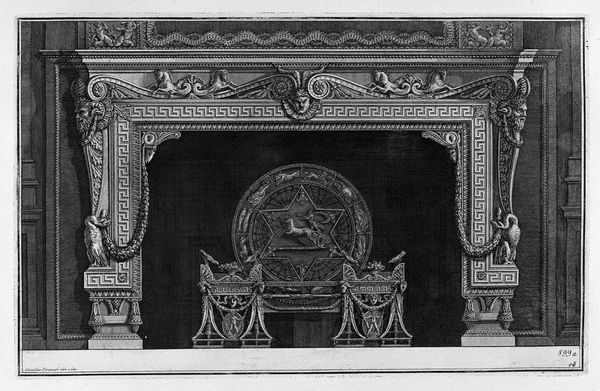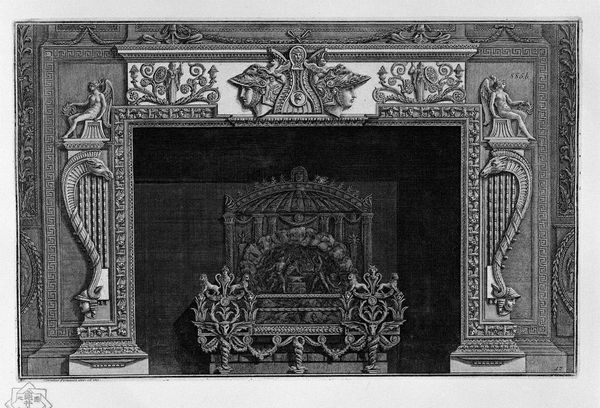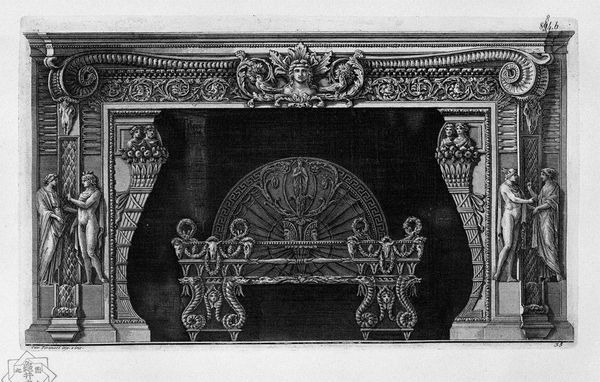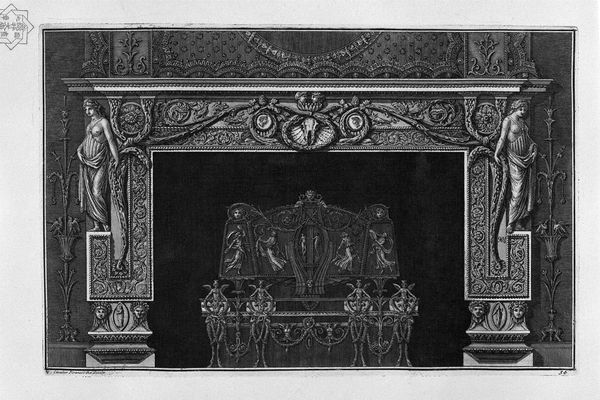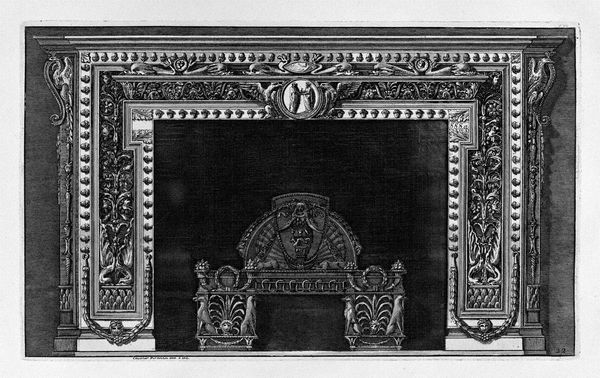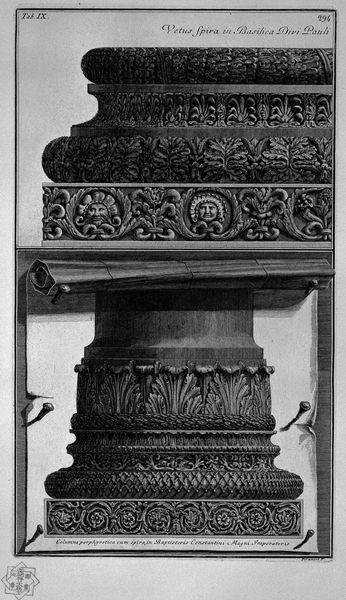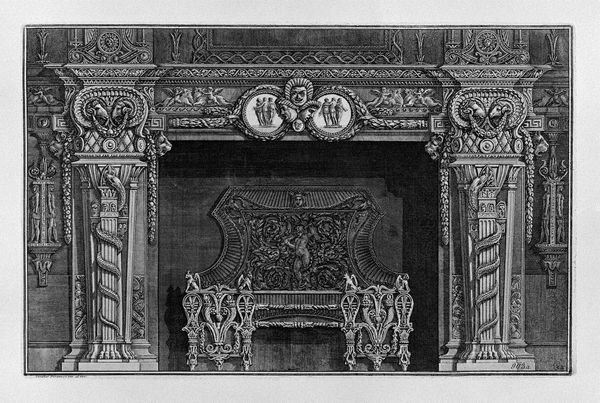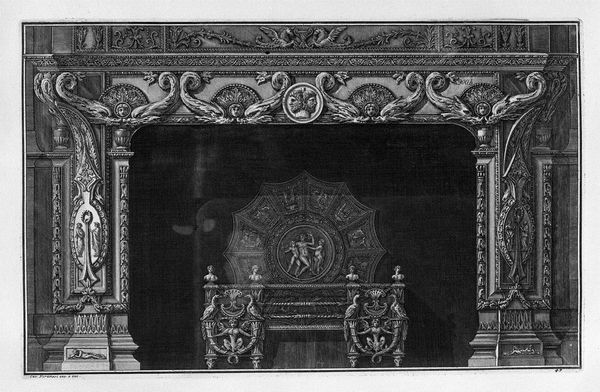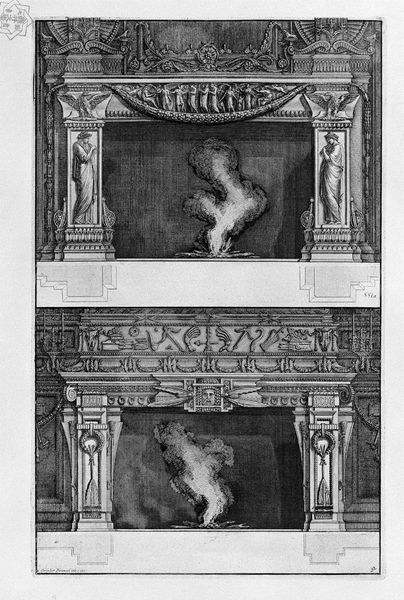
Two fireplaces superimposed with the support 4 in the chariot race in the circus, the inf with 2 swans that drink in a vase
0:00
0:00
drawing, print, etching, engraving, architecture
#
drawing
#
neoclacissism
# print
#
etching
#
stone
#
sculpture
#
detailed texture
#
geometric
#
line
#
engraving
#
architecture
Copyright: Public domain
Curator: The weight of history just pours off this piece, doesn't it? Such monumental forms. Editor: Indeed. Let's take a look at this etching by Giovanni Battista Piranesi entitled, "Two fireplaces superimposed with the support 4 in the chariot race in the circus, the inf with 2 swans that drink in a vase." Curator: Immediately, I'm struck by the juxtaposition. We have these almost aggressively grand fireplaces stacked on top of each other, rendered with such precision and detail. The symbolism—a potent mix of classical motifs. It makes one contemplate ideas of hearth, home, but also empire. Editor: Absolutely. Piranesi was fascinated by Roman grandeur. And the fireplaces become stages for exploring that, reflecting both power and the domestic sphere. But what about who has access to this kind of idealized space? Whose histories are erased or backgrounded in its construction? These ornamental swan and chariot race details idealize an image of beauty and life that is tied to the dominance and privilege of a very few. Curator: An astute observation. Symbols can be complex, vessels that change with the culture that beholds them, and as spaces where meaning gets fought for. Take, for instance, the swans—symbols of purity and grace, reflective of the Roman ideal... though even that has roots in earlier, localized, myths that came before. But superimposed on the darker mass of the fireplace opening? That's quite an arresting combination. The fireplace itself becomes an almost paradoxical altar. Editor: It's also worth noting that Piranesi often depicted not just the grandeur, but the decay, of Rome. Even in these designs there is a subtle tension, the shadow of something crumbling just beneath the surface. You can find that shadow if you start by wondering whose labor has been lost, used, and backgrounded to build these spaces. That is its own kind of icon, after all. Curator: Yes, shadows and ruins are constant echoes in his work. His understanding of history was as something living and constantly evolving. Not ossified in its own time but speaking to subsequent centuries. I keep thinking of that tension every time I stare into the shadowed heart of the fireplace, where so many burning realities reside. Editor: Absolutely. We are left to question what is preserved, and what gets lost in our veneration of historical styles and spaces, or how people past, present, and future will define those iconic traditions. Thank you. Curator: Thank you. A resonant piece and discussion, as always.
Comments
No comments
Be the first to comment and join the conversation on the ultimate creative platform.
